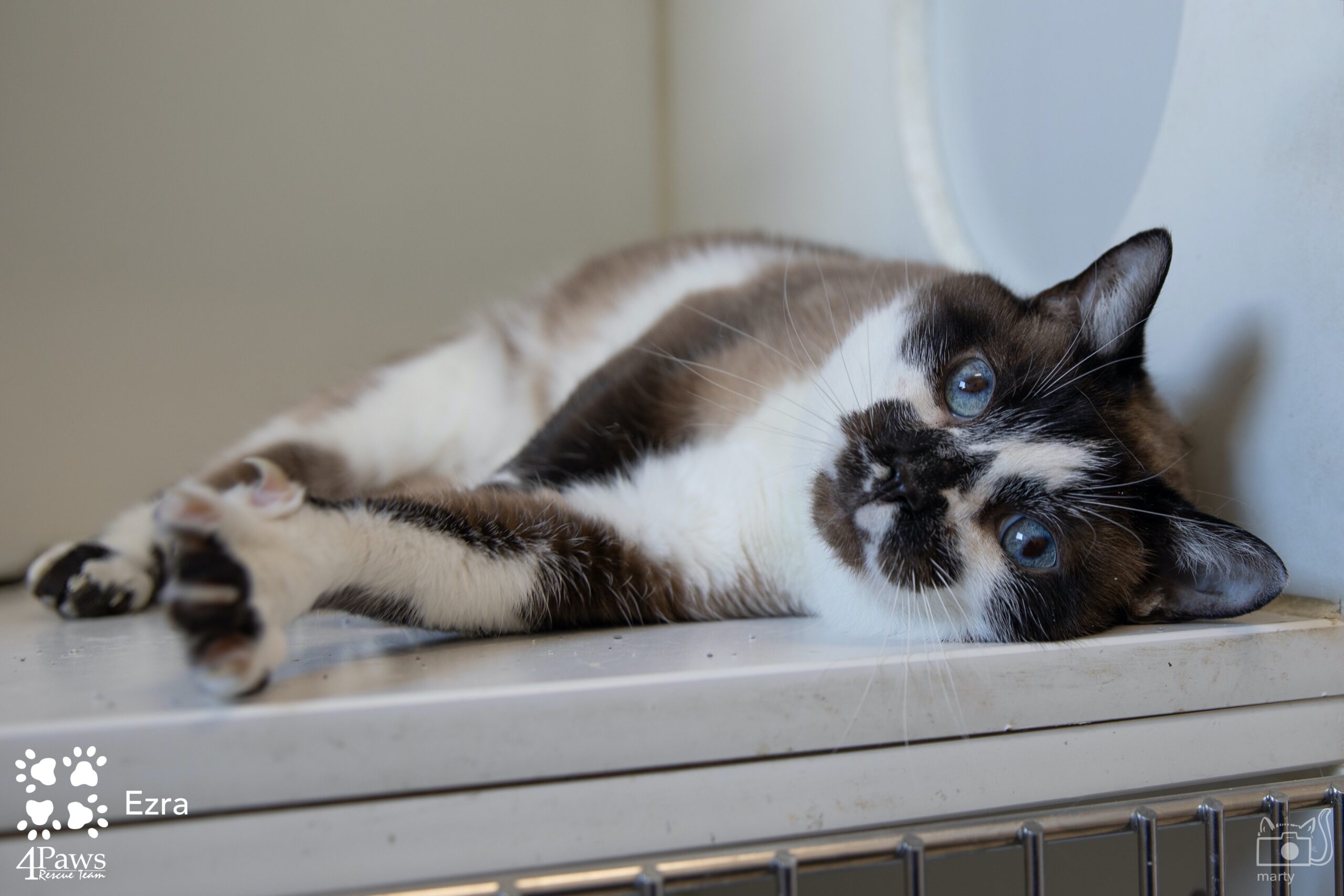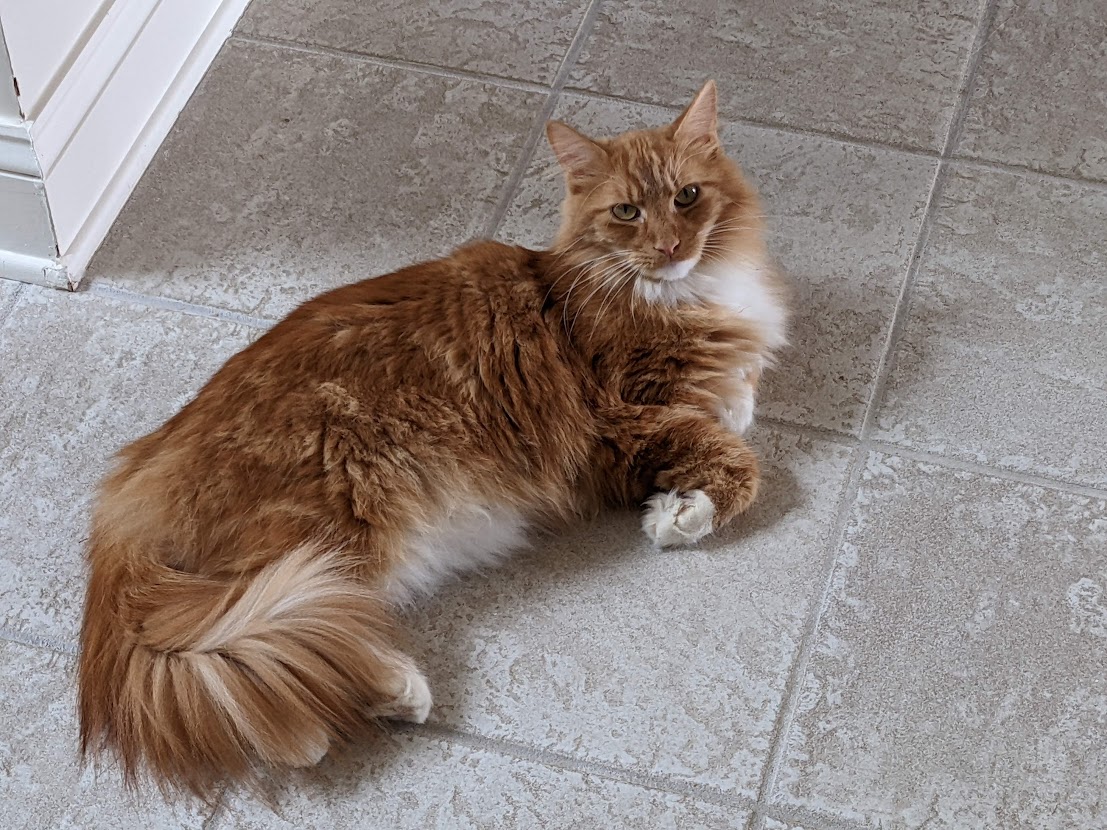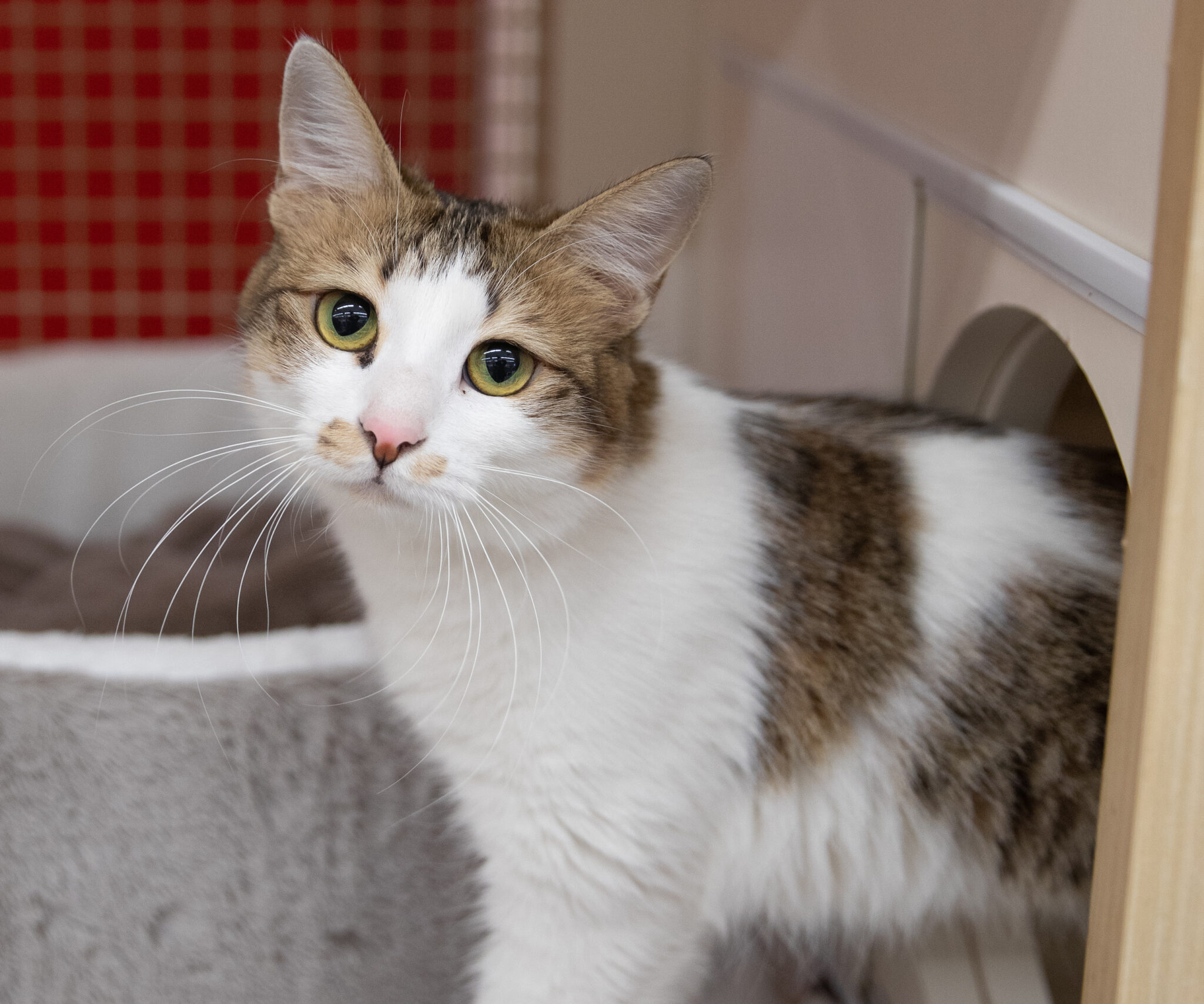There is little more frustrating than a cat not using his litter box. Shelters report that litter box problems are the number one reason owners give up their pets. Improper elimination does not have to be a death sentence. This article discusses various causes and options for correcting the problem. This is not an exhaustive discussion, however, merely an overview. And it only discusses problems related to urination outside the litter box, not defecation which may need to be approached differently.
First and foremost is the all important question—“is the source of the problem medical or behavioral?” All too often a medical problem is mislabeled behavioral and so not only are the proper steps not taken to remedy the situation, but the cat continues to suffer with pain or chronic discomfort.
Most litter box issues can be traced back to a medical problem. Believe this fact, know it—and you are on your way to a solution. Medical problems that cause inappropriate elimination cannot be diagnosed through a phone consultation with your vet or simply with an office exam. For a proper diagnosis, your vet needs to collect a urine sample and run an analysis of the sample. Some medical conditions may not be uncovered with a urinalysis, but certainly, this should be the first step. See these myths about litter box issues and see a few other reasons that could be causing your cat these issues.
Diabetes
- Too high and too Low blood sugar are essentially the same. In both cases, the body doesn’t have glucose available to it to use. Cats sometimes “present” when the level is too high/too low. “Presenting” can be anything from no energy, not eating, collapsing, or any other odd behavior. Some cats present, some cats don’t. Therefore, #2 is very important:
- Get a blood glucose monitor and get comfortable using it. Use it before giving insulin, every time. It’s nowhere near as painful as you think it is, and since diabetic cats are fixated on food (diabetes tends to make them feel hungrier), you can use food as a motivational device to get them to tolerate it. The monitor could save the cat’s life one day, it will ease your anxiety about what the glucose level is, and it will avoid some of those emergency trips to the vet’s. No human would ever take insulin without testing their glucose levels first because taking insulin when your glucose level is low could kill you. Even if the cat is not “presenting”, knowing the glucose level can help you determine what attention they may need.
- Get a notebook and keep a record of the time & date when you took the glucose reading and what it was. It is also helpful to make notes regarding when the cat ate or what it ate. You are establishing a pattern of behavior; some cats have a cycle of being “high” or being “low”. Once you have the pattern, it can help you notice out-of-the-ordinary behavior easier.
- Low glucose levels are relatively easy to fix: Get some Nutri-cal (in a tube, the stuff they give to kittens/puppies) or Karo Syrup (in the grocery store). If the cat tests low, a little bit of sugar will bounce them back. High glucose levels, especially when the cat is presenting, is more dangerous. That’s when they need to go to the emergency room.
- Make sure you are working with a vet who supports your active engagement in the managing of your cat’s diabetes. Some vets would prefer you to just give the cat the insulin they recommend and be done with it. They resent you making decisions yourself about the insulin doses. However, most vets will admit that it’s very hard to regulate a cat perfectly, so I think it’s normal to test for glucose, and if it’s already too low, why would you give the dose (or, at least, a full dose?)
- MANY things contribute to the glucose level: How much was eaten (get the cat on a high-protein diet, but try to make it natural protein as “fake” protein can cause other issues), when it was eaten (there’s the “dawn” affect, which shows the glucose rising over night as dawn approaches because the liver “dumps” glucose into the body for the day ahead: fix for that is to feed a little bit overnight), how active the cat is (activity can lower glucose levels), and if the cat has been exposed to cold. You won’t find this last concept on the web; I discovered it with Punkin. During the winter, when we would be going back & forth to our weekend house, I would notice that about 50% of the time, Punkin’s glucose level would drop as we moved him from the car to the condo. We usually arrived home around dinner time, so I would be testing his glucose right after we got in. No vet would confirm it, but my observations are that cold will decrease the glucose levels as the body is forced to use more glucose to stay warm.
- Diabetic cats pee more. To make your life easier, get plastic, sifting liners for the litter box.
- What is “high” and what is “low”? That depends on the cat. I saw Punkin’s numbers range from 30 to 500 (lower would result in a “LO” reading on the monitor and higher would result in “HI”!) Punkin never presented. His diabetes was never a problem. However, when I cat-sat Oliver who was also diabetic, he presented at around 250 with Ketoacidosis (read about on the Wikipedia) and spent a week in the hospital. The main difference, I believe, was that Punkin had type II diabetes and Oliver had type I. Older, overweight cats tend to get type II, younger cats tend to get type I. Find out the type of diabetes the cat has, and that can also help you manage the condition.
- Diabetes is manageable. On the plus side, it makes you spend a lot more time with the cat, and you will become much closer because of it. If Punkin hadn’t died of cancer, we could’ve continued to manage his diabetes longer than the 4 years that we did.
Below are some links with useful information regarding diabetes in cats:
Feline Obesity
October 14 marks National Pet Obesity Awareness Day which we believe to be an important topic to discuss with all pet owners.
As of right now, more than half of all pet cats and dogs are considered clinically overweight. While a few extra pounds might not sound like a big deal, obesity in pets can cause major health ramifications that range from high blood pressure and arthritis to diabetes and cancer.
Those issues can impact your pet’s quality of life, lower their life expectancy, and become expensive to treat over time. In short, obesity can reduce the amount of time you get to spend with your furry friend which is something we want to prevent at all costs.
Luckily, obesity is preventable and treatable with frequent exercise and proper nutrition:
- For dogs, that means regular walks and, of course, a few trips to the park here and there.
- For cats, that means unleashing their inner predator via running, jumping, pouncing, and prowling – and encouraging any Garfield types to get active.
- Because overfeeding contributes to obesity, it’s important to get the diet portion of your pet’s lifestyle right. Our veterinarians can create a custom nutrition plan to help your pet get back on track.
If you’re concerned about your pet’s weight and how it may be impacting their health, don’t hesitate to give us a call to schedule an appointment. As always, we’re happy to help.
For more information about how obesity affects pets, you can check out the Association for Pet Obesity Prevention (APOP).



